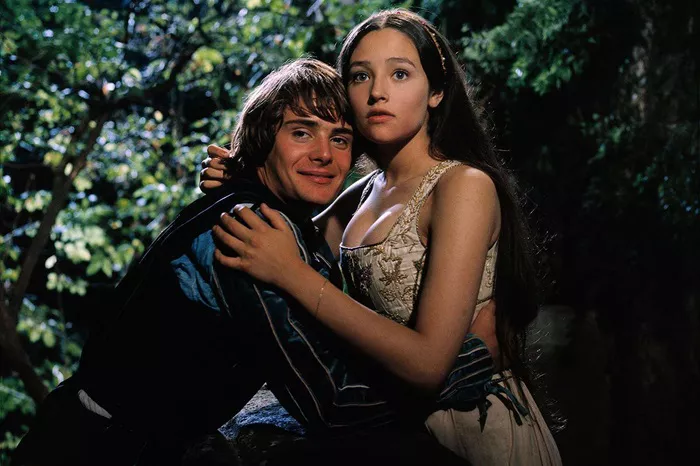Shakespeare’s iconic tragedy “Romeo and Juliet” has captured the imagination of artists across centuries and genres. While primarily known as a literary masterpiece, the story of star-crossed lovers has also had a profound impact on classical music. Composers throughout history have been drawn to the passion, drama, and emotional depth of the tale, using it as inspiration for some of the most beloved and enduring works in the classical repertoire. In this article, we will delve into the rich legacy of “Romeo and Juliet” in classical music, exploring key compositions, their composers, and the lasting influence of this timeless story.
1. The Evolution of Romeo and Juliet in Classical Music
The influence of “Romeo and Juliet” on classical music can be traced back to the Romantic era, a period marked by intense emotional expression and a fascination with literary themes. One of the earliest and most significant works inspired by the play is Hector Berlioz’s “Roméo et Juliette,” a dramatic symphony composed in the 1830s. Berlioz’s innovative approach combined elements of symphony, opera, and choral music to tell the story of the ill-fated lovers with unparalleled intensity and passion.
Following Berlioz, other composers took up the challenge of interpreting “Romeo and Juliet” in their own musical language. Tchaikovsky’s “Romeo and Juliet Fantasy Overture” is perhaps the most famous orchestral representation of the story, capturing the contrasting moods of love and tragedy with its soaring melodies and powerful orchestration. Sergei Prokofiev also made a significant contribution to the repertoire with his ballet score “Romeo and Juliet,” a work renowned for its vivid characterizations and innovative use of dissonance.
2. The Power of Musical Interpretation
What makes “Romeo and Juliet” such a compelling source of inspiration for composers? At its core, the story embodies universal themes of love, conflict, and fate, making it ripe for musical exploration. The passionate love between Romeo and Juliet, set against the backdrop of feuding families, provides a wealth of dramatic material for composers to work with.
Each composer brings a unique perspective to the story, whether emphasizing its romantic elements, exploring the darker aspects of the narrative, or highlighting the tragic inevitability of the lovers’ fate. This diversity of interpretation is evident in the range of musical styles and techniques employed, from lush Romantic orchestrations to modernist dissonance and experimentation.
3. Berlioz’s “Roméo et Juliette”: A Masterful Synthesis of Music and Drama
Hector Berlioz’s “Roméo et Juliette” stands as a landmark work in the classical repertoire, showcasing the composer’s innovative approach to combining music and drama. Rather than following a traditional symphonic structure, Berlioz divided the work into a series of episodes, each depicting a key moment or emotion from the play.
The use of solo voices and chorus adds a vocal dimension to the symphony, with the text drawn directly from Shakespeare’s play. This integration of vocal and instrumental forces allows Berlioz to convey the inner thoughts and emotions of the characters, enhancing the dramatic impact of the music.
4. Tchaikovsky’s “Romeo and Juliet Fantasy Overture”: A Romantic Tour de Force
Pyotr Ilyich Tchaikovsky’s “Romeo and Juliet Fantasy Overture” remains one of the most popular and frequently performed works inspired by Shakespeare’s tragedy. Written in 1869, the overture captures the essence of the play in a condensed and highly expressive form.
Tchaikovsky’s mastery of orchestration is on full display, with lush strings, poignant woodwind solos, and powerful brass fanfares evoking the passion and turmoil of Romeo and Juliet’s love. The famous “love theme” that runs throughout the piece has become synonymous with the story itself, representing the intensity and purity of the lovers’ devotion.
5. Prokofiev’s “Romeo and Juliet”: A Ballet of Innovation and Emotion
Sergei Prokofiev’s ballet score for “Romeo and Juliet” is a testament to the composer’s ability to blend tradition with innovation. Premiered in 1938, the ballet features a rich tapestry of musical styles, from lyrical romanticism to angular modernism, reflecting the shifting emotions and conflicts of the characters.
One of the hallmarks of Prokofiev’s score is his use of leitmotifs, recurring musical themes associated with specific characters or ideas. This technique adds depth and coherence to the music, allowing the audience to follow the narrative arc and connect emotionally with the story.
6. Contemporary Interpretations and Beyond
The influence of “Romeo and Juliet” continues to resonate in contemporary classical music, inspiring composers to explore new avenues of expression. Contemporary opera adaptations, symphonic suites, and chamber music works based on the play demonstrate its enduring relevance and versatility.
Beyond the concert hall, “Romeo and Juliet” remains a popular theme in film scores, further expanding its reach and impact on popular culture. Composers like Nino Rota, Leonard Bernstein, and Craig Armstrong have all contributed memorable music to cinematic adaptations of the story, ensuring its place in the musical landscape for generations to come.
7. Conclusion
In conclusion, “Romeo and Juliet” continues to captivate audiences and inspire composers with its timeless themes and compelling characters. From Berlioz to Tchaikovsky to Prokofiev and beyond, the story’s musical legacy is a testament to its enduring power and relevance.
As listeners, we have the privilege of experiencing the emotional depth and artistic innovation that these composers bring to their interpretations of Shakespeare’s masterpiece. Whether through symphonic grandeur, balletic grace, or operatic intensity, the music of “Romeo and Juliet” invites us to explore the depths of human emotion and the enduring power of love and tragedy.

